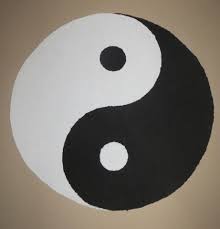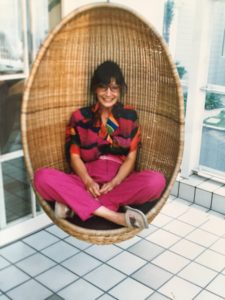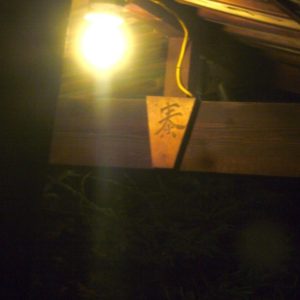KATHERINE NEVILLE’S
Japanese Journey Newsletter
June 29, 2018
Yin-Yang
When I first rescued the Japanese house, created in 1965 by the legendary Japanese potter, Teruo Hara, the place had been in disrepair, vandalized, and finally shut down and boarded up for a great many years. Once I’d purchased this wreck, I wandered around within the dilapidated house and overgrown gardens, and I soon realized that the house concealed a great secret.

From early times, I’d studied eastern feng shui, the ancient oriental art of placement upon the land to channel positive energy. But the western houses we live in are rarely built with earth energy in mind, so a western version of feng shui was created for us. This house, however, was perfectly designed to conform to the earlier principles (entrance from the north, wood stove in the fire section, altar in the ancestors area, all laid out in the Japanese tradition of measurement by “tatami mats” instead of “square feet.”)
BUT the secret ingredient that none of the architects or experts had noticed was: that the entire house is asymmetrical! The front doors were east of center; the front porch was farther east; the roof peak was north of center; the house itself lay northwest of center upon the property… yikes! What was Mr Hara — a potter, after all, whose entire life was based upon centering – even thinking about when he designed this place?
Perhaps he was thinking of the philosophy of the Tao (the Way, the Path), the Tai-Chi, the source of all energy. My friend Stephen Karcher, the first person to translate the I-Ching into English since the Wilhelm-Baynes version, pointed out to me that the famous Yin-Yang symbol (Dark-Light, Female-Male) was actually an asymmetrical wheel of energy. Asymmetry creates balance in motion. Just like the motion of a potter’s wheel.
And like a hidden clue to suggest this, Mr Hara had hand-drawn, beneath the keystone of the entrance, the sacred Tai symbol to protect the house.
The Story of the Japanese House:
· ‘Hara’ House in 1970s
· House in Disrepair in 2000s
· Japanese House Restoration Underway
Wabi, Sabi, Shibui: The Influence of Japanese Aesthetics on the Western World
The three ingredients in the Japanese house that I’ve tried to preserve are those landmarks of Japanese Aesthetics that influenced Western art, architecture, music, literature… Wabi (elegance in simplicity); Sabi (rust, patina, ageing with style); and the most important: Shibui, best described by one of my favorite authors:
“The Japanese have a word which summarizes all the best in Japanese life, yet it has no explanation and cannot be translated. It is the word shibui, and the best approximation to its meaning is ‘acerbic good taste.’” -James Michener
Please visit me on my website www.KatherineNeville.com
Facebook @AuthorKatherineNeville & Twitter @KNeville_Quest

